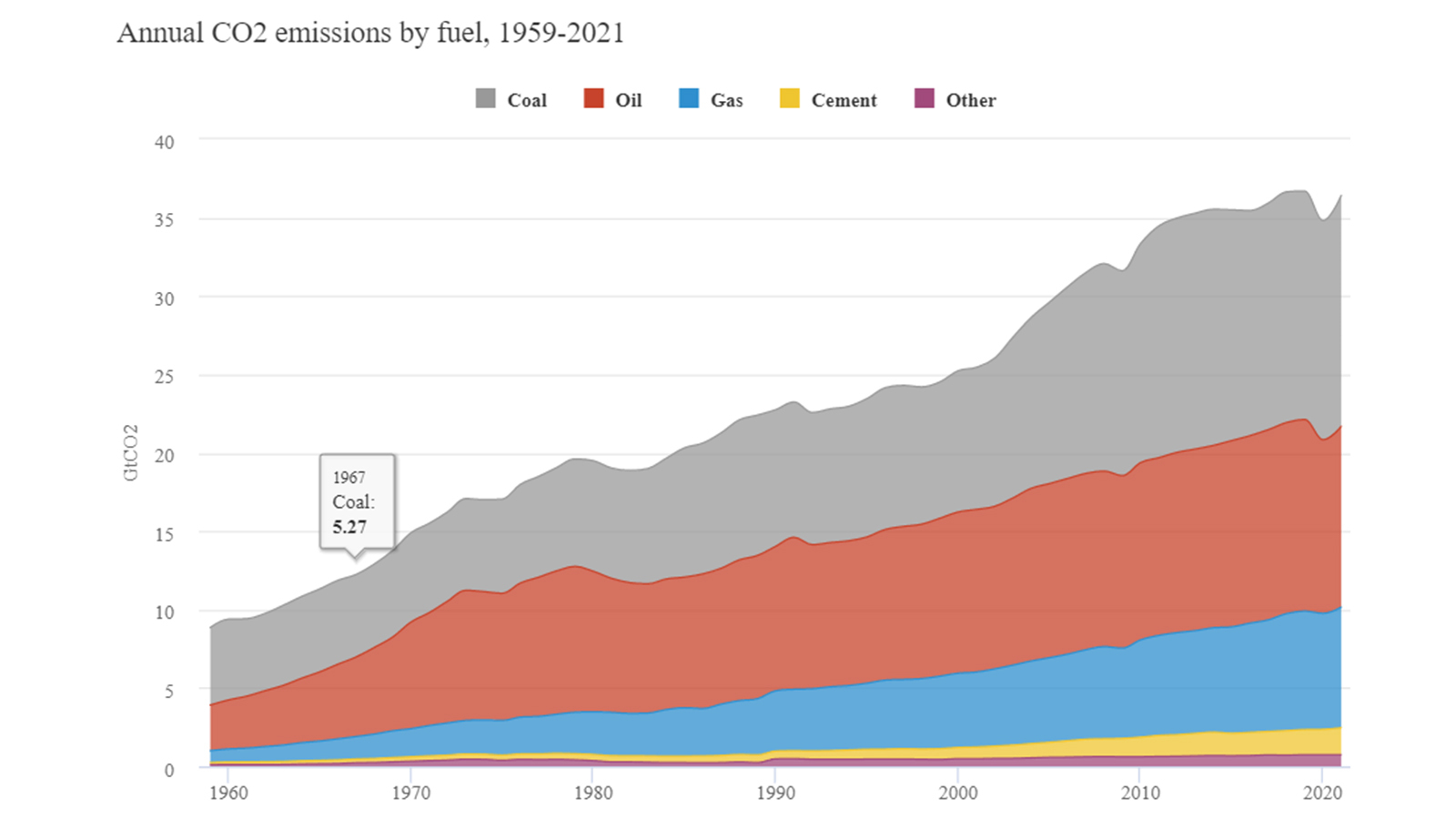Data from the Global Carbon Project (GCP) released recently shows carbon dioxide emissions have risen this year following a COVID-19 pandemic-related drop in 2020.
The website Carbon Brief late last month reported that CO2 emissions from fossil fuels and cement so far in 2021 rose by 4.9%, compared to last year’s 5.4% drop, predicting this year’s fossil emissions will be 36.4bn tonnes, which is about 1% shy of the GCP pre-pandemic high of 36.7GtCO2 two years ago.
According to the website, researchers surmised a correlation between the recovery of the global economy from the coronavirus and a rebound in CO2 emissions.
The analysis additionally reports that CO2 emissions worldwide may have been effectively flat for a decade, which researchers attribute to "historical emissions from land-use change."

Carbon Brief reported that new data lowers the amount of cropland expansion, most significantly in the tropical region.
"Emissions from land-use change in the new GCP dataset have been decreasing by around 4% per year over the past decade, compared to an increase of 1.8% per year in the prior version," Zeke Hausfather wrote on the website.
The GCP stressed that the trend of land-use change emissions is rife with uncertainty and awaits confirmation.
Its study, the 16th annual “global carbon budget,” has yet to be reviewed by peers, but it deduces China and India, the world’s two most populous countries, to be at the forefront of the resurgence of emissions in 2021. According to Carbon Brief, 60 years’ worth of data going back to 1959 pin China and India as the largest drivers in the increase of CO2 emissions.
Chinese coal, power and industry are tagged as the main contributors, researchers noted.
Research shows that while fossil CO2 emissions have been increasing globally, per capita global emissions have stayed relativity flat for not only the last decade, but since at least before the 1960s.
What researchers have known and understood about global emissions trajectories for the past decade has changed with the release of the new data.
“The new data shows that global CO2 emissions have been flat – if not slightly declining – over the past 10 years,” Hausfather wrote.
GCP’s previous estimate of an increase of CO2 emissions by an average of 1.4 gigatonnes of CO2 per year from 2011 to 2019 lowers the annual increase down to 0.1 GtCO2 over the same time period.
Should emissions from this year and last be included, it would reveal that global CO2 emissions have actually been slightly declining.
The website; however, notes that both of those years are outliers because of COVID-19 related worldwide changes that attributed to the declines.
The GCP employed three different datasets that previously yielded different conclusions but all now reveal drops in emissions in the last decade.
Three different datasets used by the GCP previously reached different conclusions, but now all three show declines in emissions through the past decade. The main difference now lies in the magnitude of decline, prompting the GCP to state that “there is a decrease in net CO2 emissions from land-use change over the last decade, in contrast to earlier estimates of no clear trend across LUC estimates,” Carbon Brief reports.
Researchers warn that the data doesn’t take into account the deforestation taking place in Brazil nor does it include forest degradation.
Professor Julia Pongratz, the director of the Department of Geography at the Ludwig Maximilian University of Munich and a member of the GCP team, told Carbon Brief that it’s inadvisable to “infer robust trends.”
“More regional analysis is needed and accurate, high-resolution monitoring of land-use dynamics,” Pongratz said. “Only then can we reduce the uncertainty around land-use emissions and their trends and their contributions to emissions reduction targets.”
Carbon Brief reported that while fossil CO2 emissions receive the most attention since they account for about 90% of current global emissions, land-use change – albeit a small contributor – presents the largest uncertainties in understanding of CO2 emissions.
Revised land-use emissions are entirely responsible for the revision in global CO2 emissions, the website reported.
The U.S.’s Environmental Protection Agency reports that fossil-fuel carbon emissions around the world have significantly risen since the start of the 20th century and CO2 emissions have experienced a nearly 90% jump since the 1970s.
According to the EPA, the countries with the most carbon emissions as of 2014 are were China, the U.S. itself, the European Union, India, the Russian Federation and Japan.

